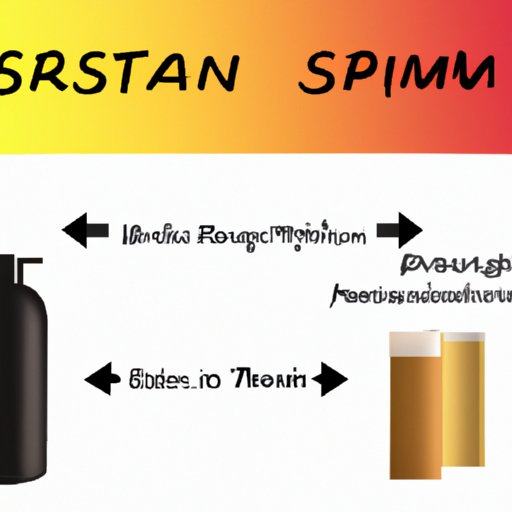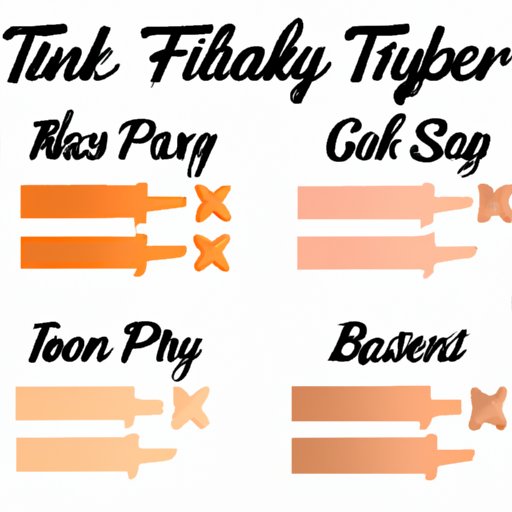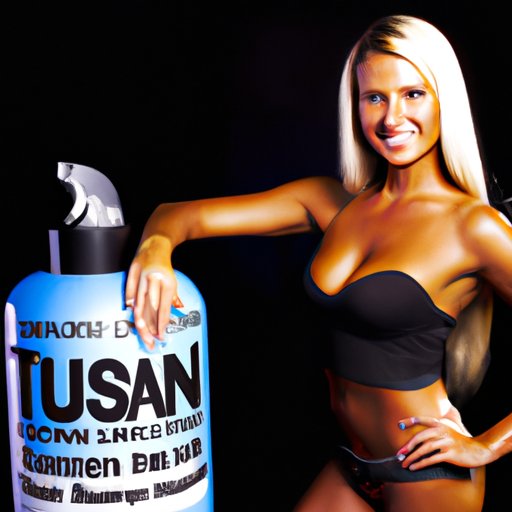An Overview of Spray Tanning: How It Works and Its Benefits
Spray tanning is an increasingly popular form of sunless tanning that uses chemicals to produce a bronzed color on the skin. It’s a safe alternative to UV tanning, which carries a number of health risks, including increased risk of skin cancer. Spray tanning has become so popular that it’s now offered in many salons, spas, and even at home.
But what is spray tanning exactly? How does it work? And what are the benefits? Let’s take a closer look.
Definition of Spray Tanning
Spray tanning is a process in which a fine mist of a specially formulated solution is applied to the skin using an airbrush, hand-held spray gun, or booth. The solution contains dihydroxyacetone (DHA), a sugar-based compound that reacts with amino acids in the dead cells of the epidermis (the outer layer of skin) to produce a brownish color change. DHA is the only ingredient approved by the FDA for use in self-tanning products.
Benefits of Spray Tanning
There are several benefits to spray tanning. First, it’s a safe alternative to UV tanning, which can increase your risk of skin cancer. Second, it’s fast and convenient—you can get a spray tan in as little as 10 minutes. Third, it’s affordable. Depending on where you go, a spray tan can cost as little as $25. Finally, it produces a natural-looking tan that won’t leave you looking orange or streaky.

Exploring the Science Behind Spray Tanning: The Chemistry and Process
Now that we’ve established what spray tanning is, let’s take a deeper dive into the science behind it. What chemicals are used in the process, and how does it actually work?
What Chemicals Are Used in Spray Tanning?
As mentioned above, the active ingredient in spray tanning solutions is dihydroxyacetone (DHA). DHA is a carbohydrate derived from sugar cane or beets. When it’s applied to the skin, it reacts with proteins in the top layer of dead skin cells to produce a bronze color change. Other ingredients in spray tanning solutions include moisturizers, preservatives, and fragrances.
How the Process Works
The spray tanning process is fairly simple. First, you’ll need to select a spray tanning solution that’s right for your skin type. Then, you’ll need to exfoliate and shave before your appointment. At the appointment, the technician will apply the spray tanning solution using an airbrush, hand-held spray gun, or booth. After the application, you’ll need to wait 10 minutes before getting dressed and leaving the salon.

A Guide to Choosing the Right Spray Tan For You
When choosing a spray tan, there are several factors to consider. First, you’ll want to choose a solution that’s right for your skin type. If you have fair skin, you’ll want to choose a lighter solution; if you have darker skin, you’ll want to choose a darker solution. You’ll also want to consider the type of solution you want. There are several types of spray tanning solutions available, including airbrush, hand-held spray, and booth.
Different Types of Spray Tanning Solutions
Airbrush tanning is the most popular type of spray tanning. It involves a technician applying the solution with an airbrush gun. Hand-held spray tanning involves the technician using a handheld spray gun to apply the solution. Booth tanning is a newer form of spray tanning in which the person stands in a booth and the solution is sprayed from all directions.
Factors to Consider When Choosing a Spray Tan
When deciding on a spray tan, it’s important to consider the type of solution you want, your skin type, and the results you’re looking for. You should also ask questions about the ingredients in the solution and the safety protocols that the salon follows. Be sure to do your research and read reviews before selecting a spray tanning solution.
How to Prepare for a Spray Tan: Tips and Tricks
Preparing for a spray tan is just as important as the actual tanning process. Proper preparation can ensure that you get the best results possible. Here are some tips and tricks for preparing for a spray tan.
Pre-Tan Preparation
Before getting a spray tan, it’s important to exfoliate and shave. Exfoliating removes dead skin cells, allowing the tanning solution to penetrate deeper. Shaving helps the tan last longer. It’s also a good idea to wear loose, dark clothing to your appointment, as tight clothing can rub off the tan. Lastly, it’s important to avoid any lotions, oils, or makeup on the day of your appointment, as these can interfere with the tanning process.
Other Tips and Tricks
To ensure the best results, it’s a good idea to avoid hot showers and steam rooms for at least 24 hours after your appointment. Additionally, you should avoid swimming, exercising, and sweating for at least 8 hours after your appointment. These activities can cause the tan to fade or streak.

What to Expect From a Spray Tan: The Aftercare Regimen
Once you’ve gotten a spray tan, it’s important to follow an aftercare regimen to help maintain the tan. Here’s what you can expect after a spray tan.
Post-Tan Care Instructions
It’s important to avoid showering, swimming, exercising, and sweating for at least 8 hours after your appointment. When you do shower, use lukewarm water and a mild soap. Pat dry with a towel instead of rubbing. After showering, apply a moisturizer to help the tan last longer.
Tips for Maintaining Your Spray Tan
To maintain your spray tan, it’s important to moisturize regularly and avoid activities that can cause sweating. You should also avoid hot tubs and steam rooms, as these can cause the tan to fade more quickly. Finally, it’s a good idea to exfoliate once a week to remove dead skin cells and keep the tan looking fresh.
Common Mistakes to Avoid When Getting a Spray Tan
The key to achieving a flawless spray tan is to avoid common mistakes. Here are some mistakes to avoid when getting a spray tan.
Preparing Incorrectly
It’s important to prep your skin properly before getting a spray tan. This includes exfoliating, shaving, and avoiding lotions, oils, and makeup. Not preparing correctly can lead to uneven results or a streaky tan.
Not Following Aftercare Instructions
Once you’ve gotten a spray tan, it’s important to follow the aftercare instructions. This includes avoiding hot showers, swimming, exercising, and sweating for at least 8 hours after the appointment. Following these instructions can help the tan last longer.
The Pros and Cons of Spray Tanning: Is It Right For You?
Spray tanning is a great way to achieve a natural-looking tan without the risks associated with UV exposure. But like any other product or service, there are pros and cons to consider. Here’s a look at the advantages and disadvantages of spray tanning.
Advantages of Spray Tanning
The main advantage of spray tanning is that it’s a safe alternative to UV tanning, which can increase your risk of skin cancer. It’s also fast and convenient, and the results can last up to one week. Finally, spray tanning can produce a natural-looking tan that won’t leave you looking orange or streaky.
Disadvantages of Spray Tanning
The main disadvantage of spray tanning is that it doesn’t provide protection from the sun’s harmful UV rays. Additionally, it’s important to follow the pre- and post-tanning instructions to ensure the best results. Finally, some people may be sensitive to the ingredients in the spray tanning solution, so it’s important to do a patch test beforehand.
Overall, spray tanning is a safe and effective way to achieve a natural-looking tan without exposing yourself to the risks of UV tanning. With proper preparation and aftercare, you can enjoy a beautiful, long-lasting tan.
(Note: Is this article not meeting your expectations? Do you have knowledge or insights to share? Unlock new opportunities and expand your reach by joining our authors team. Click Registration to join us and share your expertise with our readers.)
